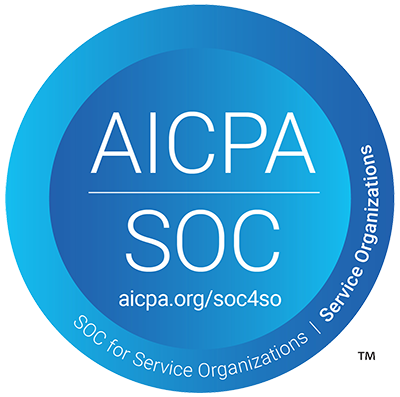Manage opioid cravings with naltrexone
At-home treatment with daily naltrexone can help relieve cravings for opioids, like pain pills and heroin.
What to expect from at-home naltrexone treatment
What is naltrexone?
Naltrexone is a medication approved by the FDA to treat both alcohol and opioid addiction. Workit clinicians prescribe it in a pill form (brand names include ReVia and Depade).
How does naltrexone work?
Naltrexone is an opioid antagonist. It binds to and blocks opioid receptors in the brain, which can reduce cravings for opioids like heroin or pain pills. It reduces the euphoric effects of opioid medications like heroin, methadone, and oxycodone.
How long after taking opioids can I take naltrexone?
Since naltrexone binds to the opioid receptors in your brain, taking it too early can cause precipitated withdrawal and make you feel sick. It is recommended that you be abstinent from all opioids, including Suboxone, for 7-10 days before beginning naltrexone treatment.
Workit Health providers have found that naltrexone works best for people stabilized in recovery, while buprenorphine/naloxone (brand names Suboxone and Zubsolv) works better for people ready to quit other opioids.
What is the difference between Suboxone and naltrexone?
Suboxone (buprenorphine/naloxone) and naltrexone are both FDA-approved to treat opioid use disorder, but work differently in the brain.
Buprenorphine:
- partially activates opioid receptors in the brain
- helps with the withdrawal symptoms caused by stopping opioids
- relieves cravings
- can be taken 12-24 hours after other opioids
Naltrexone:
- does not activate the opioid receptors
- binds to receptors and blocks them
- reduces opioid cravings
- requires 7-10 days free from opioids before taking
Each medication may suit different individuals at different stages in recovery, based on their needs and medical history.
Does naltrexone reduce my risk of overdose?
No. This is a common misconception, but naltrexone does not reduce your risk of overdose. Naltrexone reduces the euphoric feelings of opioids, which means if you use opioids while taking naltrexone, you may need to use more to feel an effect. Additionally, because naltrexone binds to the opioid receptors in your brain, it may significantly lower your tolerance. This means that you may actually be at higher risk of overdose if you use opioids while taking naltrexone.
What can I expect from telehealth naltrexone treatment?
Workit Health’s virtual opioid use disorder program includes video visits with a clinician, online recovery groups, virtual drug testing, in-app messaging with your care team, and therapeutic courses to help you grow in recovery and meet your goals.
Before your first video appointment with a clinician, we will ask you to provide your medical history via the app. After your appointment, medication will be e-prescribed to your local pharmacy if clinically appropriate.
What are the risks and concerns about naltrexone?
Naltrexone is used to help people who have stopped drinking alcohol and using street drugs continue to avoid drinking or using drugs. Naltrexone should not be used by people who are still using street drugs or drinking large amounts of alcohol. Do not take any opioid medications or use opioid street drugs during your treatment with naltrexone. Naltrexone blocks the effects of opioid medications and opioid street drugs and can lead to precipitate withdrawal. Naltrexone may cause liver damage when taken in large doses. It is not likely that naltrexone will cause liver damage when taken in recommended doses. Other side effects may include nausea, vomiting, loss of appetite, headache, dizziness, mood changes, difficulty falling or staying asleep, drowsiness, and muscle or joint pain. For more information about naltrexone, see the naltrexone listing on medlineplus.gov, the full Prescribing Information, and Medication Guide, or talk to your healthcare provider. You are encouraged to report negative side effects of drugs to the FDA. Visit www.fda.gov/medwatch or call 1-800-FDA-1088.
What's included
How to get started
Download the app
Download the Workit Health app, answer a few questions, and schedule your first appointment.
First appointment
Meet your dedicated licensed clinician in a 1:1 video call and discuss your recovery goals, care plan, and any necessary medication.
Pickup your medications
As appropriate, your clinician will e-prescribe medication to your pharmacy to relieve cravings and support your recovery.
Monthly group follow-ups
Connect with your provider, a coach, and other members on the same journey in shared follow-up visits each month.
We've helped 30k+ people find their path to recovery
4.7 stars and 2.8k+ app reviews
Your life is worth the effort of getting off opiates
If you’re looking up what happens during opiate withdrawal, you may already be considering a change.
Just thinking about change is the first step towards a different life, and a new life is created by a series of small changes that add up to result in a big one.
You can kick opiates.
It isn’t easy—withdrawal legitimately sucks—but it’s so worth it.
And so are you.
We may be able to help:
- We're founded and operated by people in recovery
- Our judgment-free clinicians won't remove you from the program for going off course
- We've helped 20k+ people since 2015
- We treat you as a whole person, including co-occurring conditions like anxiety, depression, insomnia, and more
- Our members are part of a close-knit, online community with weekly support groups and private online forums
- Our treatments are evidence-based and backed by science
We'll email you more info:






Citations
1. Naltrexone. Substance Abuse and Mental Health Services Administration (SAMHSA). https://www.samhsa.gov/medication-assisted-treatment/medications-counseling-related-conditions/naltrexone. Accessed November 2021.
2. Rudolph, K. E., Díaz, I., Luo, S. X., Rotrosen, J., & Nunes, E. V. (2021) Optimizing opioid use disorder treatment with naltrexone or buprenorphine. Drug and Alcohol Dependence, 228: 109031. https://doi.org/10.1016/j.drugalcdep.2021.109031.
3. Medications for Opioid Use Disorder: For Healthcare and Addiction Professionals, Policymakers, Patients, and Families [Internet]. Rockville (MD): Substance Abuse and Mental Health Services Administration (US); 2018. (Treatment Improvement Protocol (TIP) Series, No. 63.) Chapter 3C: Naltrexone. Available from: https://www.ncbi.nlm.nih.gov/books/NBK535266/.
4. Morgan, J. R., Schackman, B. R., Weinstein, Z. M., Walley, A. Y., Linas, B. P. (2019) Overdose following initiation of naltrexone and buprenorphine medication treatment for opioid use disorder in a United States commercially insured cohort. Drug and Alcohol Dependence, 200 (34-39). https://doi.org/10.1016/j.drugalcdep.2019.02.031.
Our pages are medically reviewed and fact-checked by accredited medical professionals to ensure that all statements about medical conditions, symptoms, treatments, procedures and tests, standards of care, and typical protocols are accurate and reflect current guidelines as well as the latest research. However, please remember that the information on this page is for informational purposes only and is not intended to replace or substitute for any medical or other advice. Workit Health, Inc. and its affiliated professional entities make no representations or warranties and expressly disclaim any and all liability concerning any treatment, action by, or effect on any person following the general information offered or provided on this page. If you have specific concerns or a situation arises in which you require medical advice, you should consult with an appropriately trained and qualified medical services provider.





